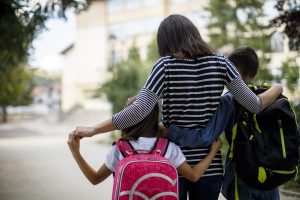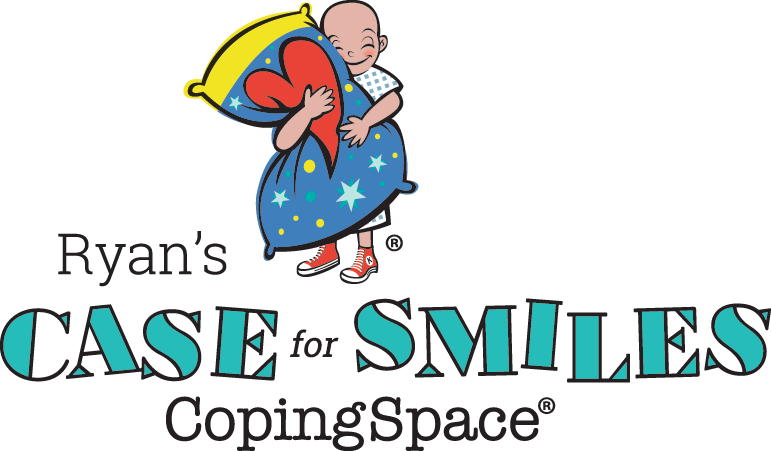BLOG
Helping Children Cope with Disruptive Events
By Kathy Pfeiffer, RN, BSN, Area Director, Clinical Operations, BAYADA Home Health Care
 Summertime usually brings a lot of fun – pools, long days of sunlight, picnics and more. But it can also bring an uptick of natural disasters such as hurricanes and wildfires. In addition, even though cases are decreasing thanks to the COVID-19 vaccine, many communities are still reeling from the pandemic. These events can be traumatic for all of us, but especially for families who have a child with a life-changing illness or injury and already so much on their plate.
Summertime usually brings a lot of fun – pools, long days of sunlight, picnics and more. But it can also bring an uptick of natural disasters such as hurricanes and wildfires. In addition, even though cases are decreasing thanks to the COVID-19 vaccine, many communities are still reeling from the pandemic. These events can be traumatic for all of us, but especially for families who have a child with a life-changing illness or injury and already so much on their plate.
Coping with Disruptive Events When Your Child Has an Illness, Injury or Special Needs
Children who have disabilities or limitations, such as dependence on breathing assistance or a wheelchair, or who have medical issues, may already feel less control over their own well-being than others. For this reason, they may have stronger reactions to a perceived, threatened, or actual disaster. They might need more reassurance, more cuddles, hugs, and loving touches, repeated explanations of the disruptive event, and whatever else brings them comfort.
Common Reactions to Distress by Age
Symptoms of psychological distress can vary by individual, and the signs may not look the same for children of different ages. Here are just some of the ways emotional upheaval and stress can manifest in children:
Infant to Age 2
- Crankiness
- Crying
- Increased need to be held
Age 3 to 6
- Regression to old behaviors (bed-wetting, thumb sucking)
- Separation anxiety
- Trouble sleeping
- Tantrums
Age 7 to 10
- Sadness, anger, or fear the event may happen again
- Confusion or anxiety due to misinformation from peers and online media
- Trouble concentrating
- Hyper-focus on the event, or not talking about it at all
Preteens and Teens
- Acting out
- Risky or reckless behavior
- Withdrawal from friends
- Feelings of being overwhelmed
- Increase in arguments and fights with loved ones
You can find more signs your child may not be coping well on the Children page.
Of course, every child is unique and what is normal for one, may be a sign of distress in another. For this reason, it can be helpful to look for changes in behavior and ongoing patterns, versus a specific sign or symptom.
Ways to Create Calm in the Storm
If your child is distressed, you’ll likely want to do all you can to help. But you may not know where to start. One of the best things parents can do is to create a “home base” that feels like an oasis in any storm—a place where their children feel calm, safe, loved, and protected.
Strategies that may help include:
- Limiting everyone’s exposure to media coverage and images of disastrous events.
- Talking about your preparedness and safety plans to give them a sense of confidence and control.
- Staying calm, positive, and reassuring; remember their emotions will mirror your own.
- Giving them opportunities to talk about it and ask questions.
- Providing opportunities to take action safely, such as making donations or volunteering to help others impacted by the disaster.
Where You Can Go for Help
Any disruptive event can be challenging, especially when you’re already juggling a lot. Fortunately, you are not alone. You can always speak with your child’s healthcare provider about your concerns and request referrals for additional support.
You might also find the below resources helpful.
- For help talking to young children about COVID-19, visit the National Child Traumatic Stress Network for their Trinka and Sam Fighting the Big Virus story and companion questions and answers at https://bit.ly/Trinka
- For local resources and immediate crisis counseling in a natural or human-made disaster, call the Disaster Distress Helpline at 1-800-985-5990 any time of day or night.
And of course, you can always visit CopingSpace.org for additional information and tips to help the entire family cope.
**Statements on this blog reflect the author’s personal opinion and do not represent the views of Ryan’s Case for Smiles. They are also not to be viewed as personal medical advice, but rather for the purpose of general knowledge. The reader should speak to their healthcare team, or their child’s, for medical advice.**
 About the Author: Kathy Pfeiffer, RN, BSN, is Area Director of Clinical Operations for BAYADA Home Health Care. In this role, Kathy oversees clinical operations for nearly 125 BAYADA offices providing skilled nursing services at home to children and adults with complex medical needs. Kathy joined BAYADA in 1997 as a field nurse, and since then has served as a clinical manager, pediatric quality assurance surveyor, director of pediatric quality assurance, and director of pediatric clinical operations. She earned a BS in Education from Texas A&M University and a BSN from the University of Texas San Antonio.
About the Author: Kathy Pfeiffer, RN, BSN, is Area Director of Clinical Operations for BAYADA Home Health Care. In this role, Kathy oversees clinical operations for nearly 125 BAYADA offices providing skilled nursing services at home to children and adults with complex medical needs. Kathy joined BAYADA in 1997 as a field nurse, and since then has served as a clinical manager, pediatric quality assurance surveyor, director of pediatric quality assurance, and director of pediatric clinical operations. She earned a BS in Education from Texas A&M University and a BSN from the University of Texas San Antonio.
